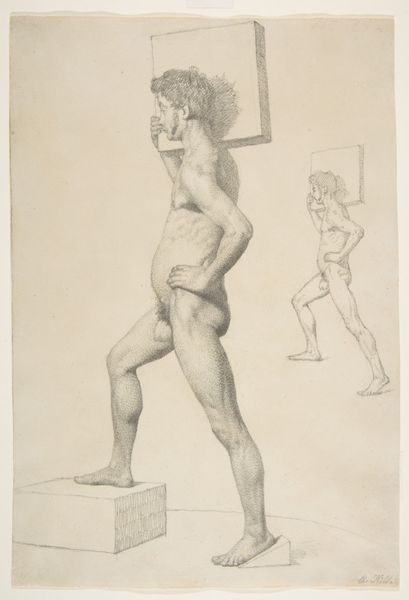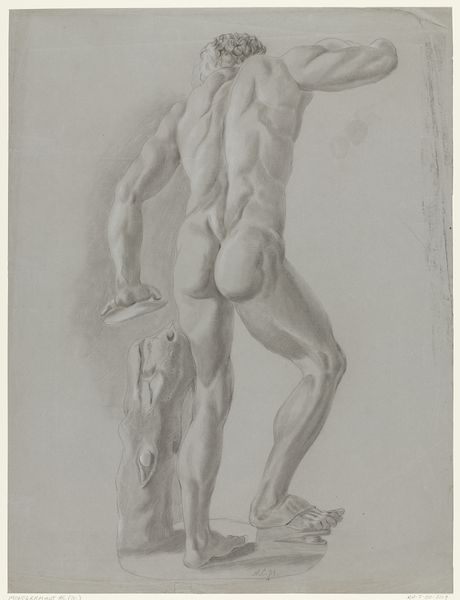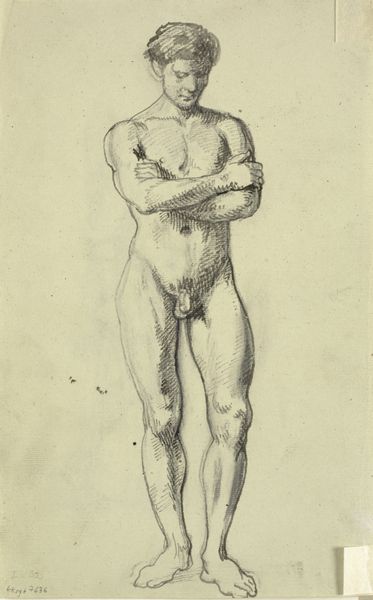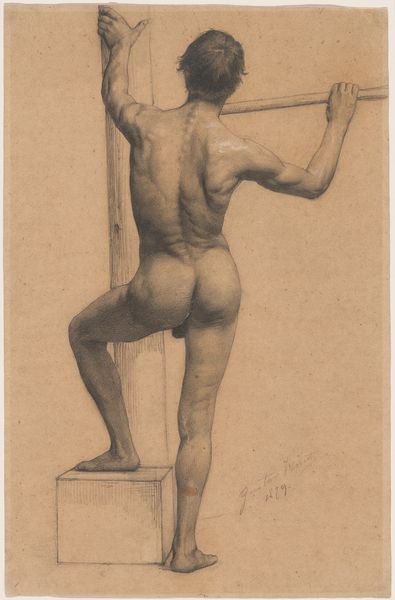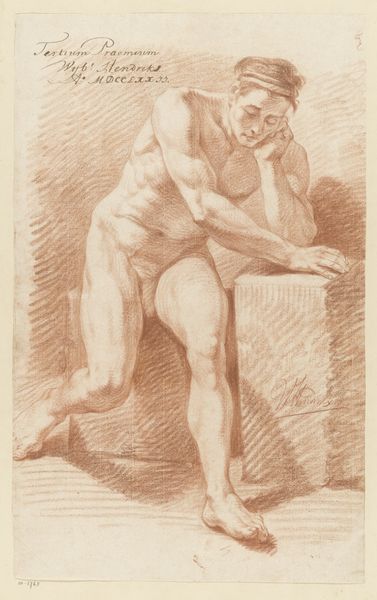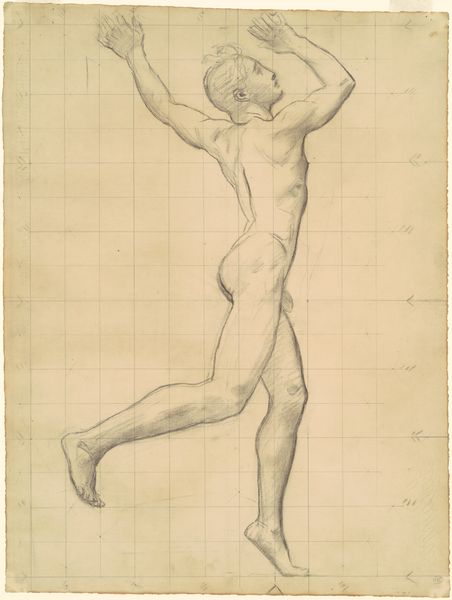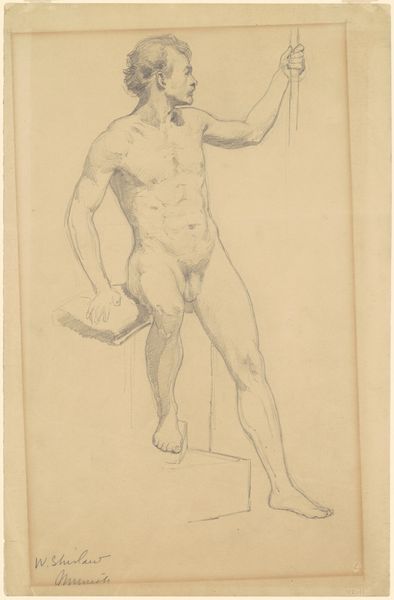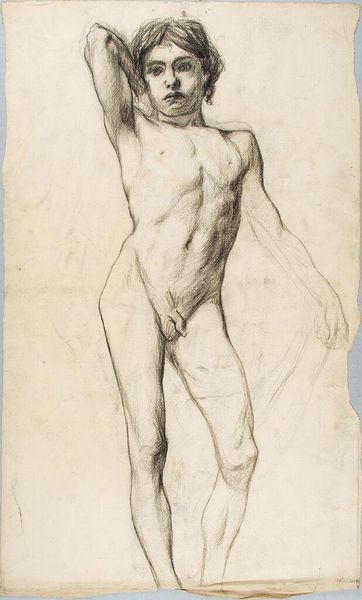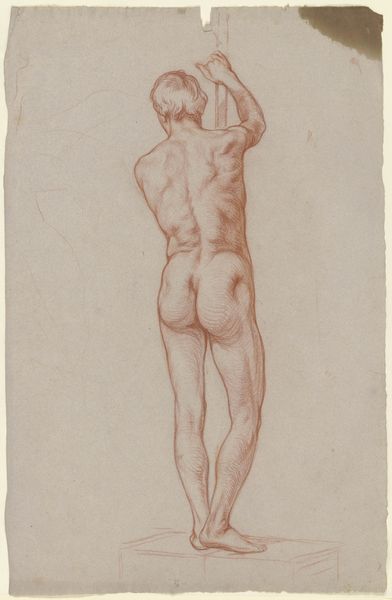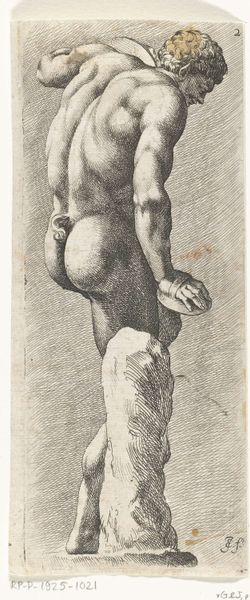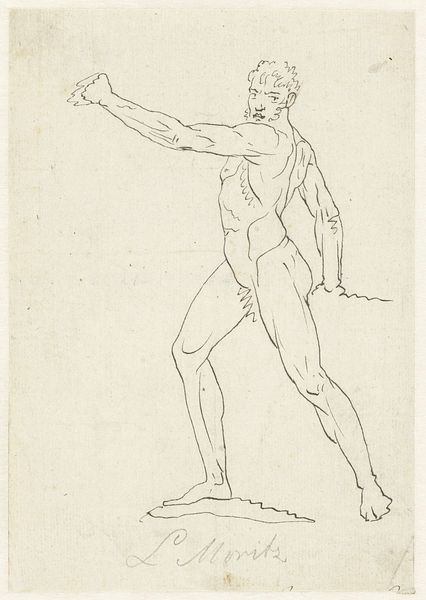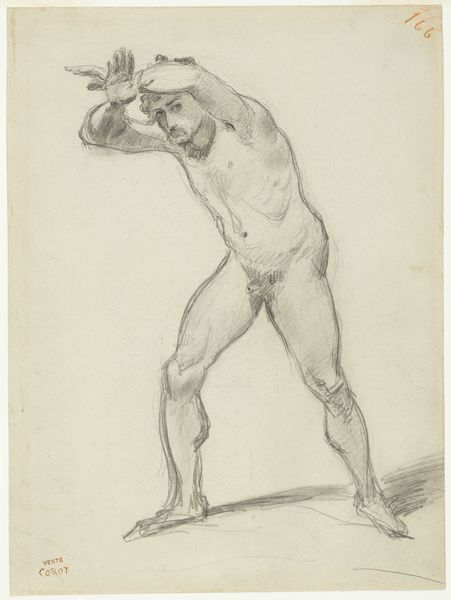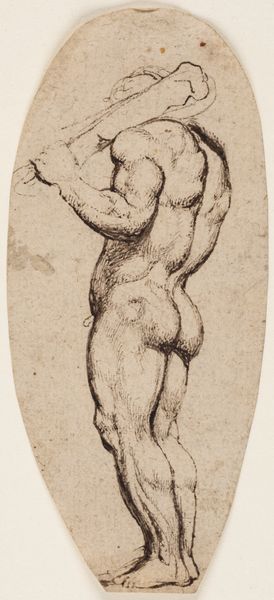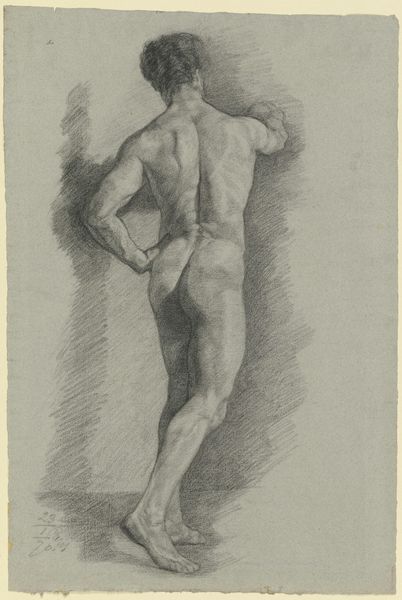
drawing, pencil
#
portrait
#
drawing
#
figuration
#
pencil
#
academic-art
#
nude
#
male-nude
#
realism
Dimensions: 11 13/16 x 7 5/16 in. (30 x 18.5 cm)
Copyright: Public Domain
Curator: Welcome to the Met. Today, we're looking at Henri Lehmann's "Back View of a Male Nude," a pencil drawing created between 1825 and 1882. Editor: My immediate response is to the clear precision in the rendering of the male figure, how light and shadow interplay across the back and shoulders. The economy of line speaks volumes about form and musculature. Curator: Exactly, the work encapsulates Academic artistic principles. Note Lehmann’s clear understanding of human anatomy, a hallmark of rigorous training in classical art. His process begins with observation. Look closely; we see that it's a study, with an additional sketch towards the right that showcases different poses. Editor: Indeed, those rapidly sketched alternate views seem integral to understanding Lehmann's engagement with the physical. I’m interested in the materiality of the pencil itself and the layers, the mark-making, creating textures that describe the curve of a calf or the hollow of the back. What does this work tell us about academic standards? Curator: For one, it points towards the process involved in creating paintings. The drawing captures this in-between state where sketches act as preparation. Through rendering and draftsmanship, it becomes something other than a mere sketch—an exercise that simultaneously explores light and shape while adhering to established rules of composition and form. Editor: While I agree about it embodying Academic conventions, the use of pencil adds something different. It speaks of immediacy, allowing us glimpses into a workshop, maybe in a way more akin to a crafted object than something wholly untouchable by mundane reality, what we see is labour through and through. I love those erasures also. Curator: Interesting how we find differing access points into the figure; both our accounts suggest something vital and intrinsic to Lehmann’s project. Editor: In its stark simplicity and meticulous detailing, it really captures something compelling about not only the beauty, but labour in rendering form through Academic values and tradition.
Comments
No comments
Be the first to comment and join the conversation on the ultimate creative platform.
